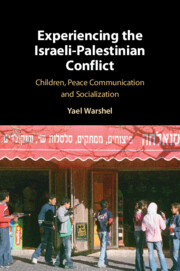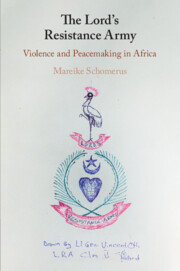Refine search
Actions for selected content:
27 results
11 - Preventive Diplomacy, Peacekeeping and Peacemaking
-
-
- Book:
- The Cambridge History of International Law
- Published online:
- 01 May 2025
- Print publication:
- 29 May 2025, pp 340-361
-
- Chapter
- Export citation
24 - Papal Diplomacy during and since the Ancien Régime
- from Part IV - Theopolitics and Religious Diplomacy
-
-
- Book:
- The Cambridge History of the Papacy
- Published online:
- 28 February 2025
- Print publication:
- 20 March 2025, pp 618-644
-
- Chapter
- Export citation
The promise of machine learning in violent conflict forecasting
- Part of
-
- Journal:
- Data & Policy / Volume 6 / 2024
- Published online by Cambridge University Press:
- 30 August 2024, e35
-
- Article
-
- You have access
- Open access
- HTML
- Export citation
6 - Anti-hegemonism as a Progressive Grand Strategy
-
- Book:
- Grand Strategies of the Left
- Published online:
- 19 October 2023
- Print publication:
- 02 November 2023, pp 107-127
-
- Chapter
- Export citation
10 - Third-Party Peacemaking and Peacekeeping
- from Part IV - Diplomacy and Conflict
-
-
- Book:
- Understanding War and Peace
- Published online:
- 06 July 2023
- Print publication:
- 20 July 2023, pp 300-336
-
- Chapter
- Export citation
Epilogue
-
- Book:
- The Last Treaty
- Published online:
- 01 June 2023
- Print publication:
- 15 June 2023, pp 224-228
-
- Chapter
- Export citation
16 - The Persistence of Old Diplomacy
- from Part IV - Counterpoint
-
-
- Book:
- Peacemaking and International Order after the First World War
- Published online:
- 18 May 2023
- Print publication:
- 01 June 2023, pp 381-406
-
- Chapter
- Export citation
Infrastructure for Inclusion: Exploring the Evolution of Afro-Colombian Movement and Inclusiveness from the 1991 Constituent Process to the 2016 Peace Agreement
- Part of
-
- Journal:
- Latin American Research Review / Volume 58 / Issue 2 / June 2023
- Published online by Cambridge University Press:
- 20 February 2023, pp. 264-280
-
- Article
-
- You have access
- Open access
- HTML
- Export citation
9 - Intervention and Human Security
-
- Book:
- Fundamental Perspectives on International Law
- Published online:
- 23 November 2022
- Print publication:
- 15 December 2022, pp 494-543
-
- Chapter
- Export citation
Counter-peace: From isolated blockages in peace processes to systemic patterns
-
- Journal:
- Review of International Studies / Volume 49 / Issue 3 / July 2023
- Published online by Cambridge University Press:
- 31 October 2022, pp. 491-512
- Print publication:
- July 2023
-
- Article
-
- You have access
- Open access
- HTML
- Export citation
14 - An Impossible Peace?
- from Part IV - No Pax Atlantica
-
- Book:
- The New Atlantic Order
- Published online:
- 22 April 2022
- Print publication:
- 12 May 2022, pp 573-595
-
- Chapter
- Export citation
Peacemaking in a shifting world order: A macro-level analysis of UN mediation in Syria
-
- Journal:
- Review of International Studies / Volume 48 / Issue 3 / July 2022
- Published online by Cambridge University Press:
- 18 April 2022, pp. 543-559
- Print publication:
- July 2022
-
- Article
-
- You have access
- Open access
- HTML
- Export citation
Reacting to the Olive Branch: Hawks, Doves, and Public Support for Cooperation
-
- Journal:
- International Organization / Volume 76 / Issue 4 / Fall 2022
- Published online by Cambridge University Press:
- 26 July 2022, pp. 957-976
- Print publication:
- Fall 2022
-
- Article
-
- You have access
- Open access
- HTML
- Export citation
Introduction
-
- Book:
- Experiencing the Israeli-Palestinian Conflict
- Published online:
- 08 July 2021
- Print publication:
- 29 July 2021, pp 1-62
-
- Chapter
- Export citation
4 - A Historical View on the Nordic “Peace Brand”
-
-
- Book:
- Do-Gooders at the End of Aid
- Published online:
- 07 July 2021
- Print publication:
- 22 July 2021, pp 80-100
-
- Chapter
-
- You have access
- Open access
- HTML
- Export citation

Experiencing the Israeli-Palestinian Conflict
- Children, Peace Communication and Socialization
-
- Published online:
- 08 July 2021
- Print publication:
- 29 July 2021
Chapter 3 - Psychology of Peace in the Outer World
-
- Book:
- The Psychology of Inner Peace
- Published online:
- 11 June 2021
- Print publication:
- 24 June 2021, pp 24-27
-
- Chapter
- Export citation
Chapter 3 - Psychology of Peace in the Outer World
-
- Book:
- The Psychology of Inner Peace
- Published online:
- 11 June 2021
- Print publication:
- 24 June 2021, pp 24-27
-
- Chapter
- Export citation

The Lord's Resistance Army
- Violence and Peacemaking in Africa
-
- Published online:
- 09 April 2021
- Print publication:
- 01 April 2021
1 - Introduction
-
- Book:
- The Lord's Resistance Army
- Published online:
- 09 April 2021
- Print publication:
- 01 April 2021, pp 1-31
-
- Chapter
- Export citation
